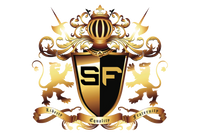I need to help explain the key features of a bespoke garment and how the process differs from MTM or custom. The user provided a detailed transcript, so I should break down the main points from that.
First, the process. The user mentioned that MTM uses a standard block pattern where measurements are plugged in, but it's not made specifically for the individual. Alterations might be needed after. Bespoke, on the other hand, involves creating a unique pattern from scratch based on the individual's measurements. There's a baste fitting (skeleton garment) to check fit and make adjustments, possibly multiple fittings for complex body shapes. Features like collars, armholes, chest, and waist suppression are tailored precisely.

Key features of bespoke include collar fitting flush to the neck, high armholes for mobility, proper chest room to prevent lapel buckling, waist suppression for shape, and details like hand-stitched buttonholes. The process takes longer (60-70 hours) and is more expensive due to the labor involved.I should structure this into sections: Process Differences and Key Features. Make sure to highlight the unique aspects of bespoke like multiple fittings, custom pattern, attention to body asymmetries, and the handcrafted elements. Also, contrast each point with MTM/custom to show why bespoke is superior in fit and customization

Wait, the user mentioned terms like "Ford fitting" and "baste fitting." Need to clarify those. The baste fitting is the initial fitting with a skeleton garment, allowing adjustments. The Ford fitting is the final fitting where almost everything is complete except minor details like buttonholes. Also, the user emphasized non-negotiables like collar and armhole fit in bespoke.
In the transcript, there's a mention of canvas and chest piece in the structure of the jacket. That's part of the construction details unique to bespoke. Full canvas vs. fused in MTM. Should include that as a feature.
Also, time and cost are factors. Bespoke takes longer and costs more because of the labor and multiple fittings. MTM is quicker and cheaper but less personalized.

Need to check if I missed any points. The user talked about aesthetics like pocket styles and lapels being more customizable in bespoke. MTM might have limited options to keep costs down.
Potential mistakes: Misunderstanding the fitting stages. The user mentioned baste fitting, possible second fittings, and Ford fitting. Need to explain each step clearly. Also, terms like "morphology" refer to body shape, so adjustments for things like dropped shoulders or pelvic tilt are bespoke only.

Structure the answer with clear headings for Process and Features, using bullet points or numbered lists for clarity. Make sure to define terms like block pattern, baste fitting, full canvas. Compare directly with MTM in each section.
Also, the user mentioned that bespoke allows for adjustments in the pattern for body asymmetries, which MTM can't do. Highlight that as a major difference.
Okay, I think I have all the points. Now organize them into a coherent answer, making sure it's easy to follow and covers all aspects of the transcript without getting too technical but still informative.
Key Features of a Bespoke Garment and Process Differences from MTM/Custom
Bespoke Process Overview
- Measurement Capture:
- Taken by a fitter (physically or remotely), focusing on precise body contours and asymmetries (e.g., dropped shoulders, tilted pelvis).
- Custom Pattern Creation:
- A unique pattern is drafted from scratch, tailored to the individual’s measurements and body shape. No commercial block pattern is used.
- Baste Fitting (Skeleton Garment):
- A partially constructed garment with a full canvas interior and temporary stitching allows adjustments for fit, balance, and proportion. Key focus areas:
- Collar: Must sit flush against the neck without gaps.
- Armholes: Cut high for mobility but not restrictive.
- Chest/Waist: Adjusted for comfort and shape (e.g., gentle waist suppression).
- Multiple Fittings:
- Adjustments are made iteratively. Complex body types may require 2–3 fittings. The "Ford Fitting" is the final stage where buttonholes, sleeve length, and waist buttons are finalized.
- Construction Time:
- 60–70 hours of handwork, including hand-stitched details like buttonholes and canvas chest pieces.

Key Features of Bespoke Garments
- Perfect Collar Fit:
- Tailored to hug the neck seamlessly, eliminating gaps between shirt and jacket collars.
- High Armholes:
- Allow full range of motion without excess fabric bulk. Adjusted to avoid discomfort.
- Structured Chest and Waist:
- Full canvas construction molds to the body over time. Chest room prevents lapel buckling; waist suppression adds shape without tightness.
- Adjustments for Asymmetries:
- Accommodates unique body quirks (e.g., uneven shoulders, posture imbalances) impossible in MTM.
- Custom Aesthetic Details:
- Choice of lapel style, pocket types (e.g., hacking pockets), button placement, and fabric quirks. MTM often limits these to standardized options.
- Durability and Craftsmanship:
- Hand-sewn elements (e.g., buttonholes, linings) and natural materials (wool, horsehair) ensure longevity.
Bespoke vs. MTM/Custom: Key Differences
|
Aspect |
Bespoke |
MTM/Custom |
|
Pattern |
Unique, drafted from scratch. |
Standard block pattern adjusted slightly. |
|
Fittings |
Multiple (2–4+), with a baste skeleton. |
1–2 fittings; no skeleton garment. |
|
Body Asymmetries |
Fully accommodated (e.g., posture, uneven shoulders). |
Limited adjustments; may require post-delivery alterations. |
|
Construction |
Full canvas, hand-stitched details. |
Often fused or partial canvas; machine-sewn. |
|
Time & Cost |
60–70 hours; higher cost. |
Faster (5–10 hours); lower cost. |
|
Personalization |
Unlimited aesthetic choices. |
Limited to predefined options. |
Why Choose Bespoke?
- Fit: Precision for unique body shapes and posture.
- Craftsmanship: Durable, handcrafted details that improve with age.
- Luxury: Fully personalized aesthetics and exclusivity.

Summary: Bespoke tailoring is an art form prioritizing individuality, precision, and quality, while MTM/custom offers a quicker, cost-effective compromise with less personalization. The bespoke process is marked by its iterative fittings, custom patterns, and attention to structural and aesthetic details unmatched by MTM.



